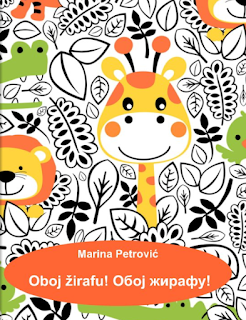In order to develop your Serbian listening comprehension skills, it's of vital importance to listen to Serbian on a daily basis. It would be perfect if you can also understand what the speakers are saying and what the subject matter is. That surely increases your motivation :) Unfortunately, there aren't many youtube videos with subtitles in English, like this one:
with Serbian translated into English in subtitles or like this one in English translated into Serbian.
I spend a few hours weekly in search for good, quality listening material for my students. It's not only enough to find a video with a catchy title, but also for a speaker to pronounce Serbian at a normal speed and speak about an appropriate topic for a lesson. I say that I spend hours looking for useful videos, not because I'm too picky, but because I tend to get fascinated with some stupid or bizarre stuff which usually happens to be listed first on Youtube. Unfortunately, the real gems are usually sitting on the third or fourth page. One of the examples, besides the first video with Zoran Milivojević, is this insightful interview with Aleksandar Ćirković:
I'll transcribe the first part of the interview and make an exercise. Until then, can you listen to the first three minutes and try to answer the following questions:
1. Ko je oduševljen "dunavskim raftingom"?
a. Amerikanci b. Nemci c. Englezi
2. Koliko dugo postoji DR (Dunavski Rafting)?
a. 4 god b. 9 godina c.3 godine
3. Za koliko ljudi je DR?
a. 1-2 ljudi b. preko 20 ljudi c. 12-15 ljudi
4.Da li postoji ruta Novi Sad - Beograd?
a. da b. ne c. ne znam
5.Šta gosit mogu da dožive na DR?
a. stres b.umor c.opuštanje
The answers are under this beautiful song about the Danube:
with Serbian translated into English in subtitles or like this one in English translated into Serbian.
I spend a few hours weekly in search for good, quality listening material for my students. It's not only enough to find a video with a catchy title, but also for a speaker to pronounce Serbian at a normal speed and speak about an appropriate topic for a lesson. I say that I spend hours looking for useful videos, not because I'm too picky, but because I tend to get fascinated with some stupid or bizarre stuff which usually happens to be listed first on Youtube. Unfortunately, the real gems are usually sitting on the third or fourth page. One of the examples, besides the first video with Zoran Milivojević, is this insightful interview with Aleksandar Ćirković:
I'll transcribe the first part of the interview and make an exercise. Until then, can you listen to the first three minutes and try to answer the following questions:
1. Ko je oduševljen "dunavskim raftingom"?
a. Amerikanci b. Nemci c. Englezi
2. Koliko dugo postoji DR (Dunavski Rafting)?
a. 4 god b. 9 godina c.3 godine
3. Za koliko ljudi je DR?
a. 1-2 ljudi b. preko 20 ljudi c. 12-15 ljudi
4.Da li postoji ruta Novi Sad - Beograd?
a. da b. ne c. ne znam
5.Šta gosit mogu da dožive na DR?
a. stres b.umor c.opuštanje
The answers are under this beautiful song about the Danube:

.png)















